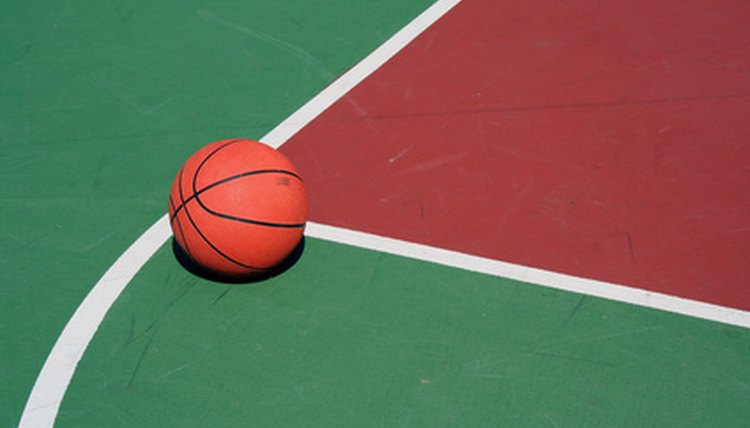Basketball Foul Shooting Rules

Foul shooting is one of the most critical parts of any basketball game. A team that can get to the foul line and make shots consistently has a decided advantage over teams that struggle to do the same. Foul shots are achieved in many different ways, with rules governing how and when they can be shot. The same rules apply to all leagues, from recreational basketball games to the NBA.
Shooting Fouls
An offensive player will be awarded two free throws if he is fouled by a defensive player while in the act of shooting. In some cases, a player will haul a shot attempt up as he is being fouled in order to draw the foul shots. The referee has the final say on whether any heave is considered an attempt. If the player is fouled on a made shot, he is awarded the basket and may take one free throw attempt. If a foul is committed while a player is attempting a three-point shot, he is awarded three foul attempts. A made three-pointer with a foul earns the player one free throw for a potential four-point possession, one of the rarest plays in basketball.
Non-Shooting Fouls
Occasionally a player will earn foul shots without being fouled on an attempt. If the defensive team records six fouls in a quarter, or two in the final two minutes, a team may shoot two free throws. The shots are taken by the player who drew the foul. A team earns one foul shot if a technical foul (usually given for unsportsmanlike conduct) is called on the opposing team. This shot can be taken by any player on the team. A flagrant foul, which occurs when the referee believes a foul was overly aggressive and/or premeditated, is worth two shots to the offensive team, which also retains possession of the ball.
Shooting Rules
For a free throw, an official must put the ball in play before the shot is attempted. A foul shooter must have both feet behind the free-throw line when the ball is shot. Teams are permitted to have players stand on the outside of the key as the ball is shot, but they may not enter the key until the ball has left the shooter's hand. Players have just 10 seconds in which to shoot their free throw once they have received the ball from an official. In the event that a free-throw shooter is injured or ejected and unable to take his shot(s), his coach may nominate a player from the bench to take his spot on the floor and at the foul line. The injured player is not allowed to return to the game.
References
Writer Bio
As a reporter/editor with more than a decade of experience dealing with sports on a local, national and international stage - including the Olympics and the Stanley Cup - I offer a great deal of expertise when it comes to anything sports-related
